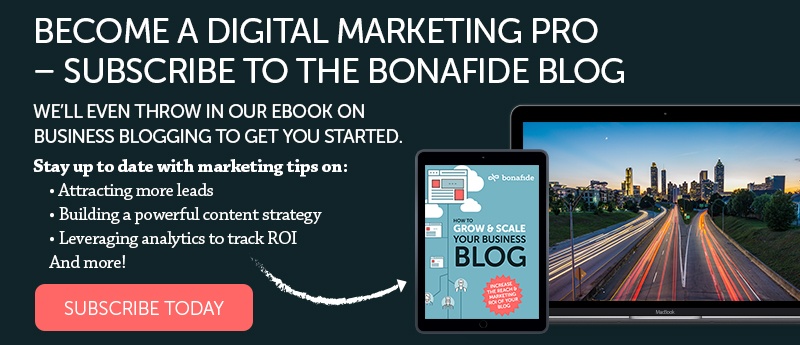
Online, everything moves faster. Information, news, transactions - if you blink, you'll literally miss something.
For a business that's still unfamiliar with the nature of the digital beast that is inbound marketing, that fast pace appears to mean overnight successes and quick turnaround times for meeting business goals. After all, all you need are a few viral Facebook posts and you're golden, right?
If only.
The truth is that "overnight" success stories often have years of hard work behind them that no one sees. Think of it as a budding Hollywood actor. Everyone's in LA vying for that breakout role that's going to make them a star - they'll never have to fight for parts or attention again, they won't have to work as hard to distinguish themselves from the crowd, and the money will pour in. After a few hundred or so auditions, they finally make it into the club and get the role. E! News reports that they "suddenly burst onto the scene," but in reality, they were there the whole time.
So, part of our job as a marketing agency is to set the right expectations for our clients as far as what kinds of results we can produce and in what time frame. It can be tough to convince them to have patience and to trust in the process, largely because they're unfamiliar with the process. They simply don't know about the different components that go into creating and executing a digital marketing strategy.
Naturally, it can be discouraging for a business that's already investing in inbound marketing to not see early and promising results. Business owners want to see their money working for them. Not to mention, delayed gratification is a hard concept to live by when their business is on the line.
Thankfully, there are a few tactics and strategies that yield more immediate results than others. If anything, you can implement these strategies in your own company to reinforce the fact that this stuff really does work. The business can be making quick progress in one area while another area is slowly gaining traction. It's a balance, but one that will ease any anxiety or reservations felt by your upper-levels or marketing team.
Instant Results With Inbound Marketing
Let's start with this fundamental question: What are "instant results" and how do you define them for your business?
That last part's the kicker. Every business has its own unique definition of success.
Many people think of instant marketing results as creating viral content, hitting social media influencer status, getting a ton of leads and sales, or growing their email list exponentially - in an unreasonably short amount of time. While what actually happens is a lot less glam and jaw-dropping, it can still have deep and lasting impacts on the business. You just have to recognize the value in the early strategies you employ.
For example, while you may not be able to gain your first 10K Twitter followers within the first month, you can set up your Twitter account, optimize it with keywords and eye-catching graphics, and outline a strategy for what type of content you'll post and how often.
You're laying the groundwork for success to find you, which is basically the cornerstone of inbound marketing.
From there, you can make some early gains by reaching out and interacting with some key thought leaders in your industry. Start a dialogue with them and get on their radar! And when one of them finally retweets one of your posts to their thousands of followers, be sure to put that in your monthly report.
Don't be afraid to over-communicate
So, you believe in the merit of inbound marketing, but you may be struggling to convince the rest of your marketing team or the company's CEO that the additional expense you're taking on will be worth it in the long run.
This is one of those times when communicating (and then over-communicating) will help you.
BE CLEAR UP FRONT
The thing with over-communication is that it's not to be confused with hyperbole. When addressing your team, make sure you stress the importance of incorporating inbound marketing into your existing marketing strategy. Then, detail what you can and will do clearly, without any embellishment. Be realistic about what you can deliver, by when, and how you're going to do it. Additionally, show them how the work you do today will impact the business tomorrow. Emphasize that everything is connected, and that each action you take will have lasting implications beyond the obvious.
KEEP THEM IN THE LOOP
It’s not enough to tell your CEO what you’re going to do for the business and how great it’s going to be. Tell them about what you’re doing as you’re doing it. Better yet, show them.
Visuals are always reassuring. When people can actually see good things happening, they’ll buy in. Because they may not fully understand your strategies or tactics, or how they’ll impact the bottom line, it helps to break it down into a medium that’s easy to comprehend and hard to deny. In such a case, try showing them the edgy new campaign you’ve written and designed. Or show them the early progress you’ve made on building up the email list. Graphs and comparison charts can also score some home runs with the big guys.
Beyond that, show them the work you’ve been doing. Have pages and pages of keyword research and analytics? Drop it on their desk for them to peruse at their earliest convenience.
And don’t forget – if you’re excited, they’re excited.
Keep in mind, none of this should be done to “trick” someone into thinking inbound marketing is more than what it is. It’s simply to give some perspective into how much goes into launching a successful inbound marketing campaign. You’re including them in the process.
SHARE POSITIVE RESULTS
Since you’re already including them in the process, include them in the success! That’s the good stuff, isn’t it? That’s what people get excited about. That’s what puts people at ease over budget expenditure.
Regular and positive updates on the progress of your inbound marketing campaign are the bread and butter of the whole operation. It communicates forward movement, and more importantly, opens dialogue between you and the inbound-skeptic.
qUICK wINS with paid advertising
SEO is obviously a strong component of inbound marketing, but building a strong online presence takes time. Your results won’t come too quickly, and you don’t want to rush that process.
But while you’re taking your time and working on that in the background, you can jump start your wins with some deliberate paid advertising.
By strategically combining pay-per-click (PPC) advertising and social media ads, you can immediately direct traffic to your site, blog, online store, social media profile, landing page, etc. Since you can track your paid expenditure pretty specifically, your results are immediately available and apparent.
What’s great about paid advertising is that it’s a perfect complement to your existing inbound content. You can earn organic traffic using SEO tactics, but you can also earn paid traffic. It’s a trade-off between time and money spent, but both ways result in progress towards your marketing goals.
TECHNIQUES THAT RESULT IN EARLY RETURNS
Alright, so let's get tactical. What are some things you can do right now to start making some numbers and wrecking some goals?
- Make something free. A free tool or a free download - something actually valuable, tactical, and memorable - will get people’s attention. The key, though, is to be sure it's something people actually want and have use for. However, there’s no shortage of free stuff on the internet. You've got to differentiate your offer a bit further if you want to stand out from your competition.
- Use long tail keywords. Long tail keywords are very targeted phrases of more than three words that people tend to type into search engines when they're looking for the answer to a very specific question. Creating content that answers these questions can send a surge of search traffic to your site. Get into your target market's head and see what you would actually type into a search bar if you were Persona X faced with X circumstance. Your search query is a great place to start your long tail keyword research.
- Newsjack. You’ll want to be sensitive about the nature of the news, but this technique involves riding a current trend or news story and capitalizing on it with your content. One good way to do this is to check your social media streams. What's currently trending on Twitter and Facebook? Or, is there anything interesting and/or controversial on the industry blogs or message boards you frequent? Check for relevant hashtags and see if you can create content around them. But be careful - don't force anything. It's inauthentic and people tend to not respond well.
- Collect useful analytics. Tracking tokens and other analytical systems can deliver a ton of useful data to you in real time. This data is invaluable - it helps you see much more than just your marketing ROI. For example, maybe you're seeing a decent return on your efforts, but your reports show that a huge segment of your target market isn't responding positively to some outreach emails. You can tweak those particular emails to improve your numbers beyond where they currently are.
- Connect with your email audience. From running a re-engagement campaign to putting A/B testing to work; your email list is a great way to send traffic and leads to specific campaigns or content. What makes it so great is that your email contacts have already opted in to receive communication from you. They actually want to hear from you and you know that they're fans of what your putting out. Don't underestimate the power of this arsenal.
EXPONENTIAL GROWTH WITH SOCIAL MEDIA
Think of social media as a snowball rolling down a hill.
Building up a following on social media takes time. It'll start slow at first, but as it grows, it'll gain momentum and weight. The growth will come faster and become more significant, until you hit the tipping point. And at that point?
Exponential growth.
Consistent and meaningful engagement on social media will give you some early wins, for sure. You'll get immediate feedback from real people, you'll connect with influencers in your industry, and you'll develop your own social voice. When the big bosses ask to see what you've been up to with the social strategy, lead with notable follows, retweets, or comments. These things are proof positive that people are connecting with your brand...and they're things that people can get excited about.
MAINTAINING GAINS WITH SOLID CONTENT
The secret to maintaining and expanding upon your early successes?
Organization. Having a plan. Sticking to the plan.
A good place to start is with an editorial calendar that your entire content team has access to. Depending on how you design it, your outreach emails, blog posts, social posts, and other content types can all be scheduled within the editorial calendar. There are a ton of templates and programs available online to help you get started. HubSpot has a great one, and CoSchedule is also worth checking out.
So essentially, you can get both immediate and lasting results from inbound marketing through careful planning and strategizing. Just make sure expectations are managed along the way.

